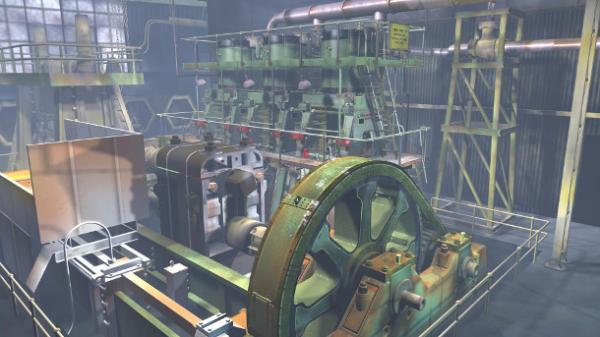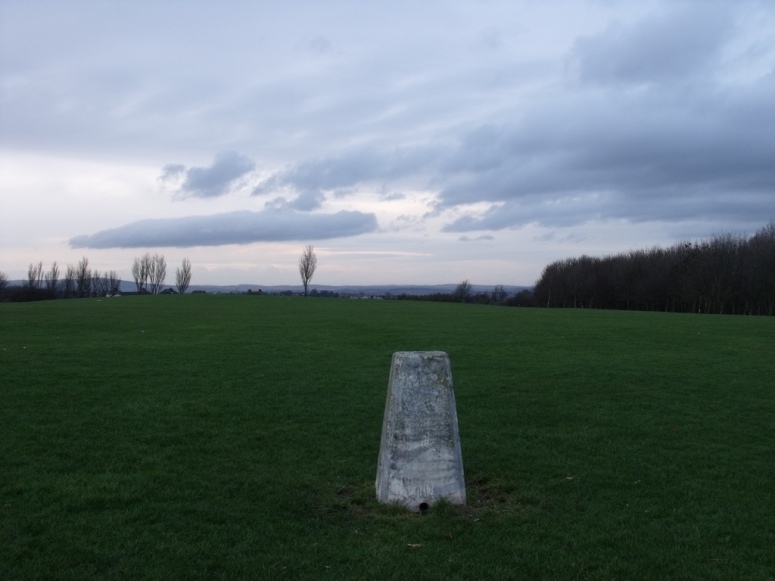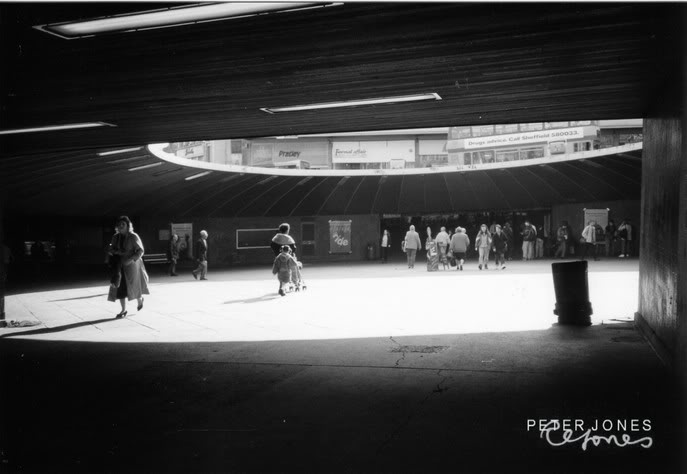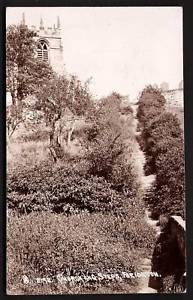I love to read an autobiography. I don’t care if the author was famous or not – I just need them to have lived an interesting life or been through interesting times. I say was famous in the past tense…I only read books from the mid 20th Century, and most of the authors are now gone. My current read is Agatha Christie. I have been through the First World War with her and now I am out doing archaeological digs in the Middle East. Some of her words jar the modern reader, but they make you assess how much has changed and how we as humans have improved or deteriorated.
I wondered what would happen if I ever wrote my autobiography. What would I focus on? What times have I lived through? I decided that as history and old things have been the over-riding interest in my life so far, then this should be my starting point. I have tinkered around with a couple of memories of places that I think have some importance on how my life has turned out. Maybe these are of no interest to anyone but those who lived it with me. But here we are…4 short essays.
Industrial Revelations

Kelham Island features in the River Don, just a little to the north of Sheffield City Centre. On each successive visit that I make, a little bit more smartness appears. The scum went off the top of the river. Then apartments shuffled their way in and they made the roads better. But as I write, there are still fascinating glimpses into the area’s past purpose. If you get off the tram at the bottom of Infirmary Road and walk towards the Fat Cat pub, you can marvel at the blank facades of Victorian works and covet 1930s style windows with an archaeology-thick coating of grime.
Negotiate the apartment blocks and you will eventually reach Kelham Island Museum. Amongst the thrusting-forward blocks sits a sample of our working past – what Sheffield made and what machines were used to make it with. You can’t miss it. There’s a massive Bessemer Converter sat outside. I find the thing a bit menacing, like I have some genetic memory of the tyranny of steel making.
It was a dangerous job, and my ancestors gave up English pastoral living to come to the city and do it. The coastal farmlands of Cornwall and Somerset and the Cotswolds were left behind for the smoke and clang of industry. Quite possibly, the shell of the dwellings that they abandoned could fetch a fortune today as a second home. But at the time, they would have been little more than hovels. It was a hand to mouth existence, dependent on the English weather. Too much rain, too much sun and you went hungry. So the call of regular dependable work won, and they settled here.
Steel was a lucrative industry. It spread out along the valley of the River Don. More ingenious ideas were thought up to make the stuff better, quicker, bigger. These things are now are for display only, exhibits to tell us what it used to be like. The exhibit that speaks to me most about ancestral conditions is the River Don Engine. It fills a room on its own, this monstrous piece of engineering. Three or four times a day they set it going, its arms revolve slowly at first, then it speeds up, pinning me to the wall in fear of a part of it sheering off and causing havoc in its momentum. But the most effective aspect is aural. It is the rhythmic boom of the Engine that is the most fascinating. It makes me consider the time when there were many engines like this one sat in the valley bottom. What must it have been like to have to listen to this in multiple every day, all day. To get to the point when you only notice that it has stopped.
The terraced houses clamber up the hillside of Grimesthorpe, where my Great Grandmothers came to live. This boom would have sounded in the ears as they pegged out their washing, and been barely muffled when they shut the thin wooden back door. Not the clatter of a tea cup or the singing of a kettle would have offered respite from the sound of work. So different from the birdsong or the sound of the wind on a clifftop field.
It is a wonder that they didn’t go mad. Such stoicism created me. But this noise faded as I was born and was replaced by the sound of construction and modernisation.
My Trig Point

My first home was on a post war housing estate along with my parents and grandparents. Legend has it that the city is built on seven hills, and this estate breasts the top of one of them. Stand on one side and see the red brick boxes snake down into the valley. Turn around and see the start of Derbyshire, green undulations that will ripple on into the hills of the Peak District.
The best place to stand around here is the trig point on the top field. Presumably this is the highest point in the area, it was certainly the windiest as I recall. This white painted triangular post was an ancient monument to me. To get there, we would have to pass the much older farmhouse at the top of the street. The poor old stone cottage, its pastoral idyll had been swamped by semis in the modern style. But I ignored this much older historical marker as just another house back then. I hope that this was down to the way that it had been overwhelmed by a greedy city rather than my own ignorance. But in the end it was a house, and I had seen lots of them before. The post on the hill was something different. It seemed to come out of the storybooks with spotty toadstools.
A painted concrete triangle sprouting out of a field does appeal to a sense of intrigue, even before we are old enough to understand what that is. A little person like me could be lifted onto the top of it for a short sit down and a better view. It’s one of the best seats I ever had. I never gave any thought to what it was. I heard it called trig point but this was a name without meaning until I was much older.
Now I do know what they are. They were put there by the Ordnance Survey in the 1930s to enable a modern, accurate mapping of the whole country. There were hundreds of the things, each within sight of two others. Primitive now, but ingenious all the same. I love an OS map. I pore over them looking for daft place names. I make things out of old ones to try and put them to good use. They are historical records of how we used to look. Did it all start there, at the trig point? Did the cartographer’s magic soak in as I sat there? Funny of one of my early jobs was with the Geographical Association.
A Hole in a Road

Sometimes landmarks are lost before they have chance to become a historic monument. I would give this label to the Hole in the Road.
My first home was a 3 generational one – it wasn’t so unusual in the 1970s to live with extended family. It will become normal again – the population grows faster than housing, and prices are out of reach. But for a while, it has been the thing to aspire to – your own home where you can live independently. So eventually I moved into a flat with Mum and Dad, the 13th floor of a high rise overlooking Sheffield City Centre. Overlooking the new concrete showplace with its underpasses, covered walkways in the sky – and a great big hole in the road. Castle Square, to give it its official title that was never used, was excavated out at the end of the 1960s. That bit of town had never really got over that night that the Luftwaffe paid a visit. So someone at the Town Hall decided that we needed to bunker down a little bit while we did our shopping. This underground square was reached by a network of slopes, steps and jerky grey escalators. It was partially roofed over, with a big circular opening in the middle. As viewed from above, this opening was the hole in the road.
My overwhelming memory of this period of my life is tropical fish. The Castle Square aquarium probably looms large in the memories of many people of my age bracket. No trip to the shops could be completed without a good gawp at the poor creatures moping about inside the tank. One night, I fell ill with tonsillitis, and became delirious. I remember vividly laying in my hot little bed in the sky and seeing tropical fish swimming around my head. My only experience of fish had been at that fish tank, and I have no doubt that this is where the vision came from. I feel it was a strong formative influence. Ever since then, I have hated the sight of fish.
The dark passage ways and faulty escalators doomed the Hole in the Road to eventual obsoletion. A planner’s “Let’s put it down to experience”. When the new tram system was built in the early 1990s, it was filled in and a tram stop plonked on top. But those of us who remember it do so with a kind of perverse affection. It was awful towards the end, but we all knew it and walked through it every week. It was on the way from the bus station to the shops, you couldn’t avoid it really.
It is a marker to so many of us, like a lot of things that are protected now were memory points for our ancestors. Its name will live on as long as my generation do…and one day, maybe a team of archaeologists will be faced with a very interesting underground labrynth and excavate it with excitement at what they might find. I wonder if there are any fish skeletons down there?
A-Spire

When I was growing up, Sheffield was a hungry city. Slum clearance had displaced so many people, and a lower population density was now required. They built upwards. It wasn’t enough. So Derbyshire had to surrender to the urban sprawl. Once the new boundaries were set, the space was filled with new tarmac streets and various types of housing. I suppose they wanted to see which type worked best. While all of this building was going on, we were moved from our city flat to this newest part of the city. It was still a massive building site when we arrived. The school hadn’t even been completed yet, so all of us young pioneers had to be bussed elsewhere. Acres of mud and stacks of bricks were our playground at the weekend.
This is where we stayed put. The question I sometimes ask myself is – do I love sites of antiquity because I was so deprived of them in my formative days? I grew in a sea of new, and anything old was really rather magical.
I remember fixating on two sites during these years. There was a stream laying down a pastoral corridor through the developments. Designated green spaces were placed along it, with the occasional playground and clump of trees. Naturally, we saw the waterway as an extension of our play area. We had our ‘jumping across it’ contests, or we pulled our little black wellie boots on and waded down it. At one point, the stream bed seemed to be paved. We called it the Roman Road – these stone slabs had certainly been there for a long time. But as for their date or purpose, I am still unaware. Perhaps this was my first experience of the fact that some antiquities are more difficult to explain than others. Not everything in our landscape is obvious or documented. They just sit there, soaked in for so long that the meaning has ebbed away.
As I grew, I was able to venture further downstream. This would take you into an older village, one that had become the eye in the storm of new estates. The old village centre was overlooked by a church, perched on the top of a slight mounding in the landscape. I never went inside, but the churchyard became a favourite hanging around space during my teens. I particularly enjoyed the steps up from the path that followed the route of the stream. They were made of stone, and must have been contemporary with the church itself. Each step was worn into a shallow concave shape, the rubbing of over a century’s worth of feet. Evidence of people who had hauled themselves up for funerals or Sunday Evensong, or taken a short cut to and from the fields or the coal mines. This became my place to ponder. I’m not religious, but I can sympathise with a lover of old churches, often the only solid remnant of local history; representing the sense of place and the people that have lived in it. I want to know more about the people that once used the church, as everyone had to do. What did they think about while walking to church? What sins did they worry about while sat in the pews? What was the gossip whispered in the porch? For every person, a story. I decided that I wanted to tell some of them.
#Sheffieldissuper
No comments:
Post a Comment